Implied Setting and Building a Line
What's the next most amazing thing you could publish?
It’s been a little over a year since we checked in with watt from worlds by watt. watt’s got a new kickstarter coming up, The Lands of Life and Death, which launches April 2. You can follow the kickstarter here. We wanted to talk a little bit about setting and building a line for your game.
Sean: Glad we’re getting to chat again.
watt: Absolutely, it’s been a crazy year for you it looks like. I wanted to chat with you a bit about Mothership’s setting, if that works for you.
Sean: Absolutely, let’s dive in.
watt: I’ve heard many times that content creators describe Mothership’s setting as an ‘implied setting.’ How did you think about Mothership’s setting during the creation of the 1E rulebook and how do you think about Mothership’s setting now?
Sean: It took us awhile to come up with the outer boundaries of Mothership’s setting but it largely came about by trying to solve design problems that other games had already solved. Stars Without Number and Traveler are the big names in this space and frankly we had to ask ourselves whether we wanted to compete on the same grounds as them or carve our own path.
For example: Traveler has trade and ship mortgages and ship building at the center of its game loop. To me this describes a kind of libertarian utopia. That it’s every man for himself out on the frontier. There’s also a lot of the old pulp planet hopping stuff in there as well. This helped establish in my mind that Mothership more of a neoliberal hellscape. And that informed decisions around economics, ship building, etc. We designed a whole trade system and then threw it away because essentially we realized: the kinds of people you’re playing in Mothership won’t have access to the kinds of capital that allow them to trade or build ships. It’s just entirely out of their reach. So we didn’t need to go down that path.
With you building an entirely new setting on top of Mothership’s foundations, what parts of its implied setting did you find it most difficult to toss or change to fit your world?
watt: Probably the largest aspect of Mothership’s implied setting I modified was downsizing Mothership’s galactic scale. The Players Survival Guide does an excellent job of communicating through text, rules, and artwork what a typical Mothership adventure might look like - spaceships, space stations, inhospitable planets, etc. Through the technology of Mothership’s world, it’s also possible to travel great distances fairly quickly and easily.
Cloud Empress’ first books focus on a particular region of Earth in the far far future during the Summer of the Century Brood of giant cicadas. Rescaling Mothership meant creating slower modes of travel, rations based provisioning and seeding the entire region with conflict and wonder and excising the spaceship narrative frame.
Rules-wise, I wrestled most with adapting Mothership’s Panic and Wound tables. Mothership roots its play in a fairly scientific expectations of the universe (subverting these understandings later using the horrors of space!). The Panic and Wounds tables reflect a relatively scientific grounding. In Cloud Empress, technology and mysticism thoroughly blend together due to a degraded understanding of both. At the same time I made the Panic and Wounds less scientific, I also increased the explicit narrative impacts certain wounds and panic responses would cause, for example, #5: “A wound that rattles your beliefs. Reroll your Mind Stat (adding any relevant age modifiers).”
It seems to me there’s a balancing act when it relates to how detailed and specific elements of a ttrpg setting are written. Where do you dig into specificity and where do you purposely omit details in your writing and creative leadership of Mothership’s setting?
Sean: I think about this a lot. We had a breakthrough moment when a friend noted that we could name specific medical procedures rather than abstracting it out. The specific procedures for regaining Intellect or Health or Wounds, as well as their costs, say something specific about the setting.
In adventures I like our tables to point to a real specific concrete thing. Something immediately usable in game. In our core books though I prefer generative tables to be categories or types. Things that can be reused. 0e had a fabulous Scum table which detailed very specific bad mercenaries. We cut it from 1e to save it for an adventure. It felt too specific and not reusable enough. Did you find a balance in Cloud Empress? How did you find your way there?
watt: That’s so true that the values of goods and services say quite a lot about the world.
First and foremost, page length consistently constrains how much I can share in Cloud Empress. There’s only so much you can fit in a staplebound zine. I’m not complaining though! Zines have a wonderful table presence and I don’t love most of the four hundred page ttrpg tomes that seem so common. I’ll mention one example of cutting specificity – I wrote this whole long table column exploring the origin of each spell in the Rulebook (about thirty different 2-3 sentence paragraphs). The spell origins were cut for space and they also tied each spell to closely to the world’s lore in a way that could be limiting.
This might sound odd, but I think narrow specificity can create more expansive experiences of play. A detail about the world can act like a pin on a map extending the landscape of possibilities. Mothership’s ‘slickware’ (your version of cyberspace and cyberpunk memory modifications) lives with a host of limitations and constraints in its use, but expands the types of stories players can experience.
I think some of writing specificity well comes down to exclusivity. My favorite types of specificity don’t create conflicts around exclusivity. I hate situations where the Warden or a player has a creative idea and someone interjects, “actually Jedi outlawed the use of force avalanche and the skill was forgotten before the Republic Era.” (editor’s note: lol lmao) In Cloud Empress, like one of my favorite games, Into the Odd, everything might be possible due to Slips in time and space.
In contrast, Cloud Empress’ advertises itself around these huge magical cicadas called the Imago. With Imago, the mystery of their existence and purpose drives speculation and adventure. Each Warden and playgroup decides what’s going on with the Imago without my authority over explaining an overwhelming near force of nature in the world. I don’t think most players want a clear explanation of what’s going on.
I’m really inspired by Mothership’s use of four character classes, Marine, Scientist, Android, and Teamster. Cloud Empress echoed this setup with the Sellsword, Magician, Lordling, and Courier. Were/are you ever tempted to increase the roster of classes? What do you think is gained or lost by having such a limited number of party roles during character creation (compared to the 8-16 options in many other systems)?
Sean: I’ve been tempted a couple of times. The executive is really the only character class I might add (we have a draft to go along with a gradient descent pamphlet) but I think largely there is a divide between skill based and class based games. The collection of skills IS the class. Shadowrun does this with its archetypes which are collections of skills to build a class. Dnd keeps skills to refine your class.
If a game has a lot of classes I tend to want them to be hyper specific to a setting (like Troika) rather than a gigantic list of archetypes (like in dnd). Even with 5e if I’m building a campaign I like to cut down the class list to four because giving the option of warlock, barbarian, Druid, and warforged immediately sets a tone for the setting. “You can be anything” leads to a sort of muddled universe.
Ultimately this just came back to cleric, fighter, magic user, thief.
watt: As I gear up for the next Cloud Empress Kickstarter, I’m wondering how you think about planning for the future of Mothership. Namely how do you determine what to publish when and where to take future Mothership expansions?
Sean: Building a line is something I think about a lot. The timing of releases and what each module brings to the table. Even in our zine era, we were thinking a lot about this. Dead Planet was super maximalist because all we had was the PSG. We needed a book that could showcase literally everything we thought Mothership could do. It had to have a little bit of everything. A Pound of Flesh felt like it specifically needed to address space stations and then give players a hub to build off of. Gradient Descent was our take on a megadungeon. Another Bug Hunt was our take on an introductory module, which felt important because it would release with the boxed set.
Now, we have a full time writer, Luke Gearing. One of the absolute best to do it. We haven’t had a full time writer before and Luke’s never been one before. So we’re developing our method for reliably putting out great adventures. What’s our system? A big thing is just asking ourselves “what’s the book that would be the absolutely most exciting to play if you’re a Mothership fan right now?” or “where are we weakest as a game? What kinds of play have we failed to support?” This doesn’t always mean that’s what the next release is, but it’s where we start before we start breaking it down to logistics.
That being said, I think this kind of thinking, this idea of going big, is often missing from a lot of good (even great) publishers. I’m always waiting (and pestering) my favorite designers to give me big toolkits, huge campaign settings, or sprawling locations to explore. It’s not just that more is better by any means, but some of it is about the opportunity cost of learning a game and running it for your friends. Give me something I can sink my teeth into for a long time.
Do the hard design work. Go build a crafting system with 1,000 recipes for me that are all in world and tied to hexes. I think elided rules and minimalist and rules lite are really great for use at the table because they empower referees to make quick decisions. But back at the lab I want you to use that springboard to come up with something that I couldn’t prep myself. Complex mysteries, or evocative events for long term campaigns.
So that’s how we approach deciding on where to go next. What’s the kind of work that only we can do because we’re getting paid to do it. If you’ve ever thought like “oh I’d like to run this sort of campaign, but I couldn’t because I don’t have the time to come up with all the NPCs you need or I wouldn’t have time each week to solve this or come up with that,” that’s the kind of thing we’re trying to do. Write the detailed prep and then display it in a way that makes it very, very easy for you to run at the table.
What’s coming up next for us is a book called WAGES OF SIN. It will be our first big hardcover book. It’s our space crime book, essentially. Tons of fleshed out bounties with compelling twists and just interesting premises. A toolkit for bounty hunters and then warden tools for turning these bounties essentially into living NPCs in your campaign whether you’re running a bounty hunting game or not. We’re really excited about it particularly because it’s the kind of thing people design games about but don’t ever get around to designing adventures for. We hope to fix that as well as give 3pp a template for expanding this.
What about you? Now that you have a line started, where will you go next? How do you build on what you’ve started? What’s the MOST Cloud Empress thing you could give your players?
watt: WAGES OF SIN – what a title! I’m definitely looking forward to that when it drops.
As for Cloud Empress and me? The next Kickstarter, Cloud Empress Life & Death launches this Tuesday, April 2nd. As both an artist and publisher I think I excel at creating vivid settings. The next books lean into expanding the science fantasy setting created last year. When you talked about Dead Planet, I found myself nodding my head. With Land of Cicadas, Cloud Empress’ first setting book I tried to give players a cross-section of the world, it includes nomadic farm life, an imperial invasion, invasive spores, ancient monstrosities, and of course giant psychic cicadas.
In the two new setting books we’re trying to fund, the focus shifts towards diving deeper into single aspects of the world. Land of the Living (co-written/designed by Em Matson), explores a vibrant area to the north exploding with mushrooms, communities intertwined with the needs of spore towers, and persistent tears in time and space. Land of the Dead showcases Cloud Empress’ darkness – ash deserts, a massive ruined city raided by its former protectors, and master magicians drawn towards the sin under the rubble. From the start, Cloud Empress has been a maximalist exorcise in scope. Similar to Final Fantasy XIV or other MMO’s I’ve built the world to be expanded to a massive scale. The new hex maps expand the world to three times its former size.
The other big fan requests I’ll be satisfying in the new campaign make the Cloud Empress line even more beautiful. In the new campaign – we’re printing gorgeous box sets to store all folks' previous Cloud Empress content. The box sets also act as an accessible starting place for new players and should open new retail avenues for the game to reach an even wider audience. Folks also asked for hardcover versions of the books, so most of the new stuff and reprints will be printed in hardcover now that I’m ready to handle a more logistically challenging project that includes international printing.
Sean: That sounds amazing. You’re really building just such a detailed and incredible world. I can’t wait to hear more about it. Okay, that seems like a good place to stop. Hopefully, we’ll be able to check in in another year and see how far you’ve come in expanding Cloud Empress.
watt: Can’t wait.
And that’s our interview! I’ve been neck deep in shipping and fulfillment for Mothership 1e these past couple of weeks but I’ve got some great articles in the wings about advertising and kickstarter. So look forward to that and I’ll write to you soon. If you want to check out watt’s kickstarter, you can do that here. Give it a follow, I think watt’s doing something really special here.
Until next time!



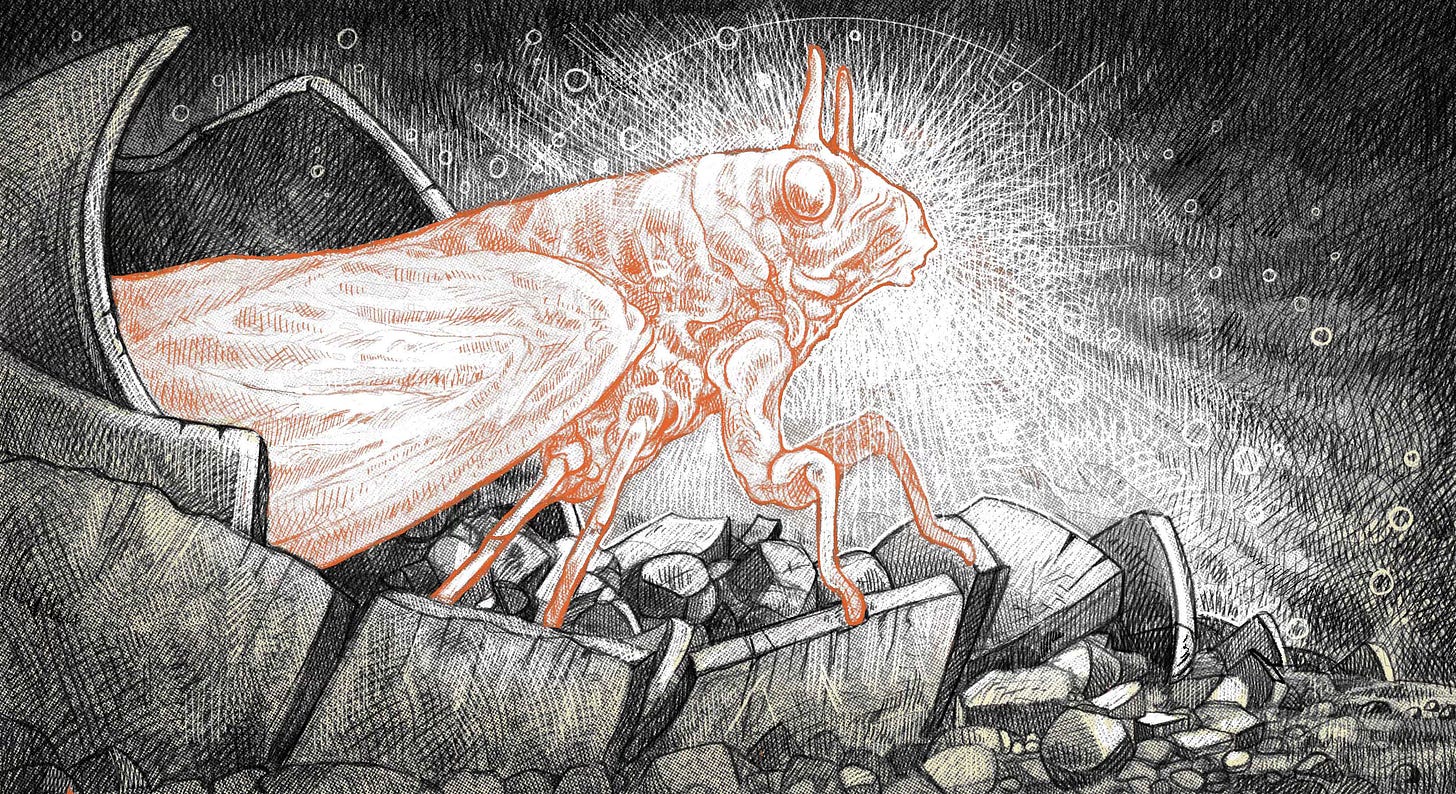

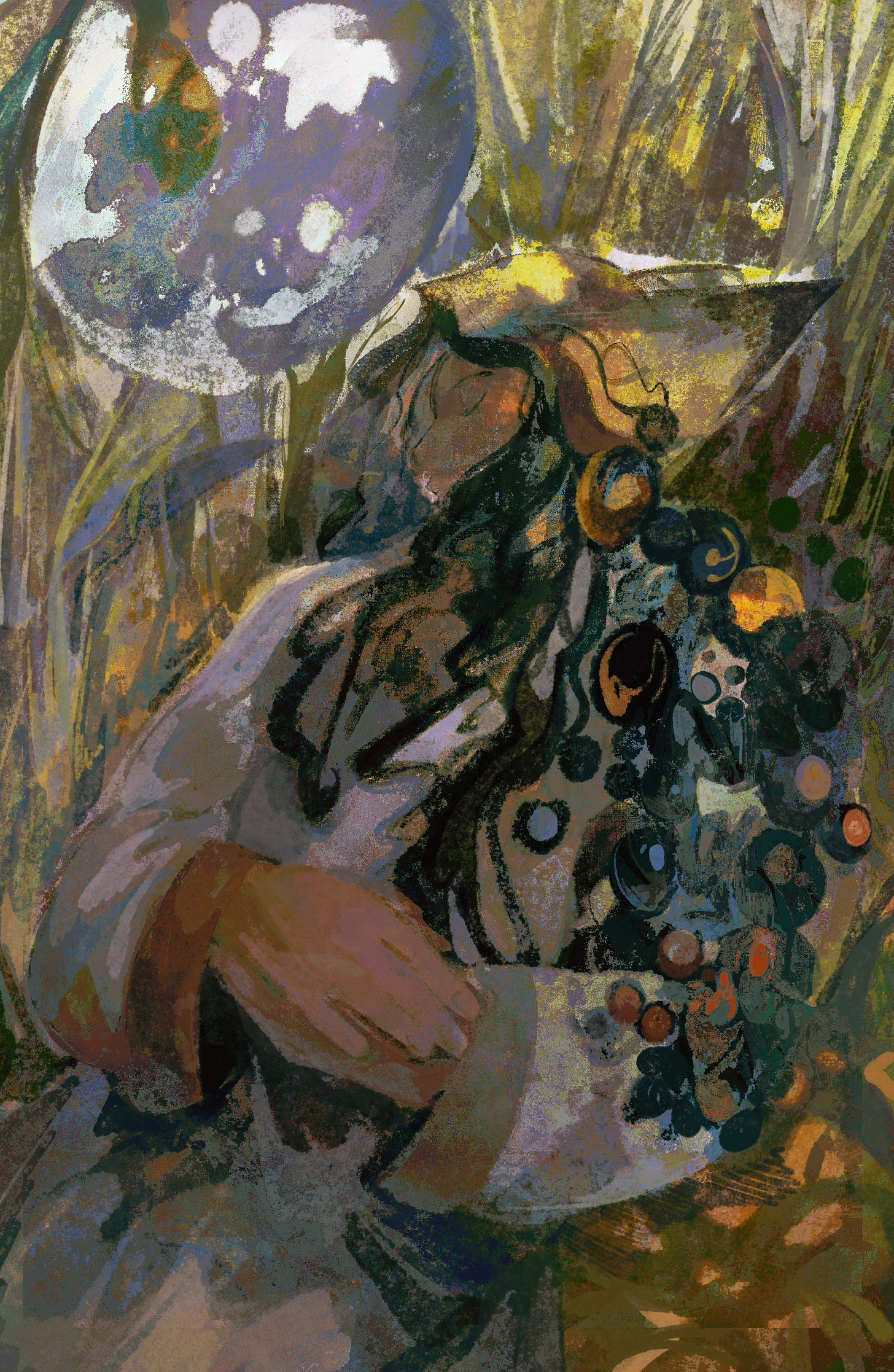
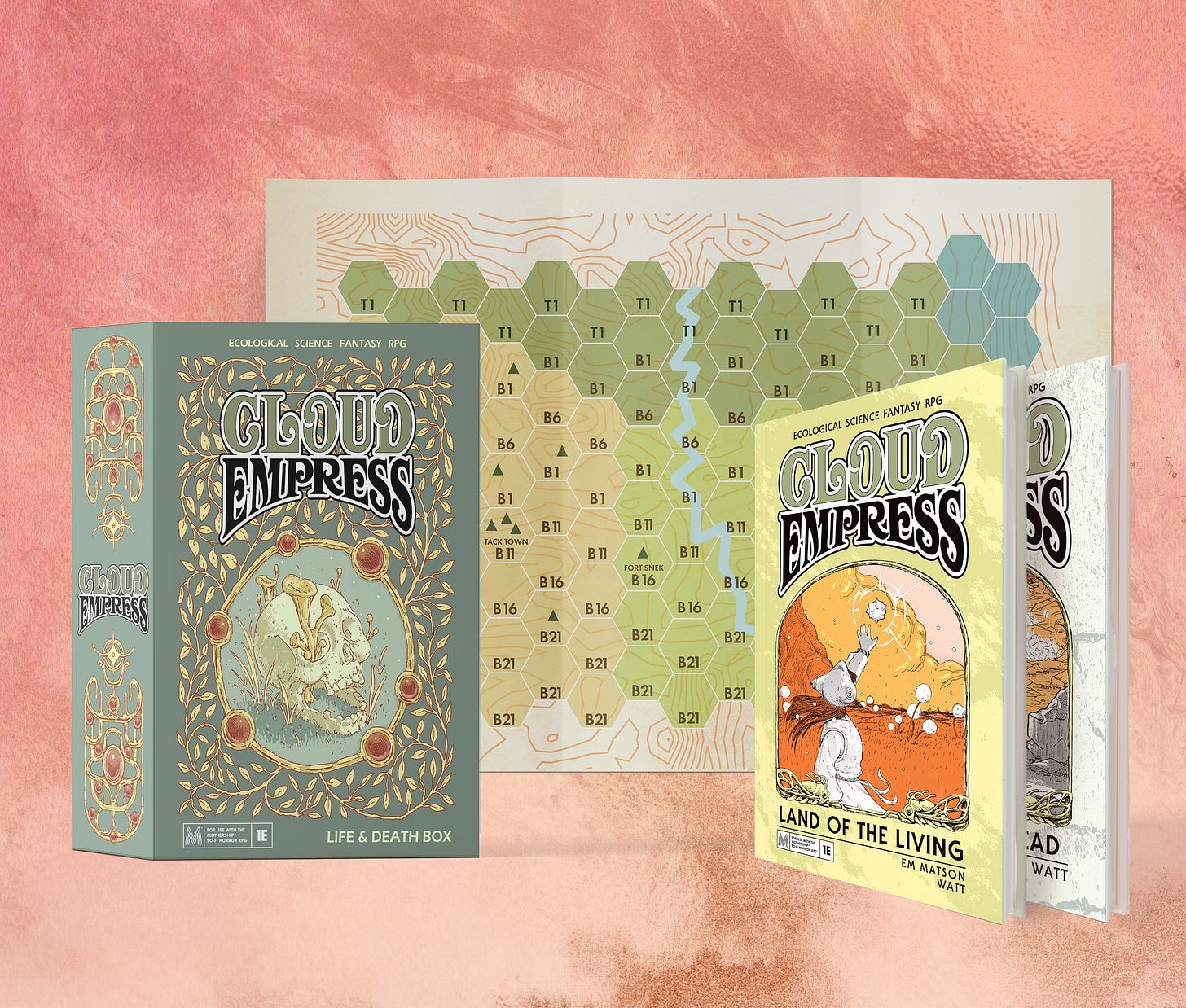
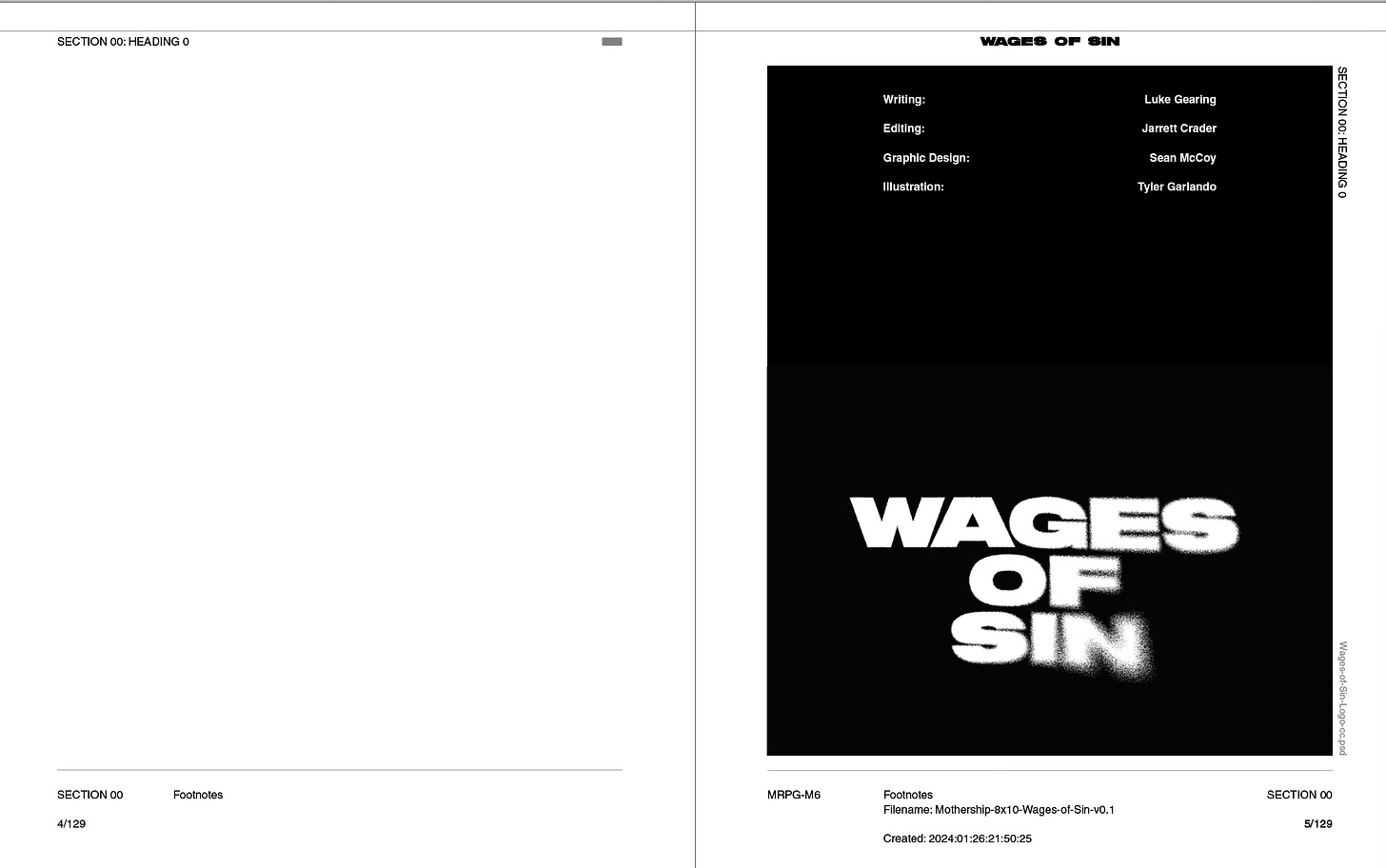
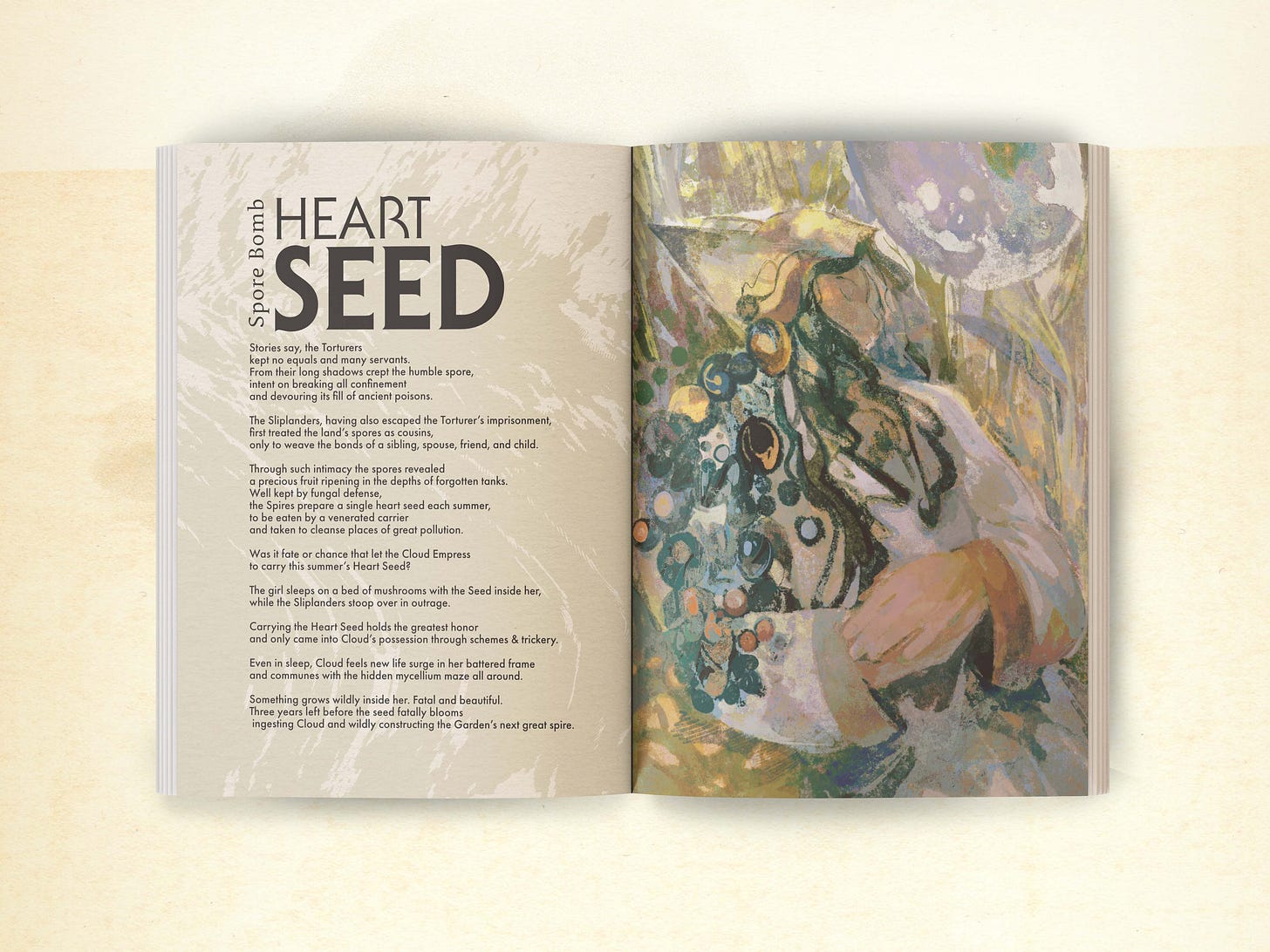
What an excellent conversation from a couple of excellent designers! I originally missed the hype for Mothership and Cloud Empress but I'm firmly onboard by now and looking at running both in the near future.